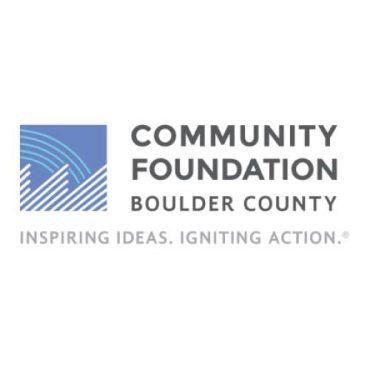“What’s wrong with you guys?” were the last words spoken by Denver resident Paul Castaway of the Lakota Sioux Nation on Sunday before he was shot by Denver police outside of a family member’s home at Capitol City Mobile Home Park among a neighborhood of children who were playing. Castaway’s mother Lynn Eagle Feather said that he had been depressed and that he suffered from schizophrenia. Eagle Feather told reporters at a protest last night that he had become violent Sunday night but that he did not hurt her as police indicated in reports. She told media at last night’s rally against police violence that she called police to “take him to jail, not to kill him.”
Police reported that Castaway charged at them with a knife but video surveillance shows that Castaway held the knife to his own throat when he was shot according to those who viewed a video of the incident. The video was shot by trailer park surveillance before police ordered the trailer park owner to turn it over but not before family members had already viewed it and copies were made.
Police are withholding the name of the shooter although the officer has been placed on paid administrative leave, a policy that Denver community members have objected to in city council meetings and Citizen Oversight Board public forums calling the policy “a paid vacation for murder.” Some Denver residents have advocated for simply taking the officer off of the streets during an investigation.
Yesterday a crowd that started small but grew to as many as a hundred gathered outside of the Denver Police Administration Building at the request of family members who wanted to confront police, “Look at his face! Look into his eyes!” a family member cried to Commander Tony Lopez who observed the protest from outside the building doors but did not respond. Glenn Morris, organizer with the Colorado American Indian Movement said that the US has never come to terms with the genocide of native people, “There’s a history of Indian killing here that they’ve never ever come to grips with. There’s statues to it right over there. You can walk less than 5 minutes. Monuments to Indian killing in this city right now. They’ve never come to grips with it, so we must make them.”
“We’re not a piece of meat. We’re not deer. You can’t just shoot us and just kill us! Kill us!” a family friend expressed to the crowd while holding a sign that read, “POLICE MURDERING AND BRUTALITY HAS TO STOP.”
Castaway’s brother expressed, “ I was one that came out and saw him laying and saw his blood spilled on the ground. And it was, it was hard to see the fact that my brother lay there, shot by DPD! They arrested him and handcuffed, afterward! There was no [attempt] to bring him back to life or anything. That is not the way we’re supposed to handle people who’ve got issues, mental, whatever it may be.”
In the past year, there have been four other high profile DPD officer-involved shootings. One involved the fatal shooting of Denver teen Jessica Hernandez who was shot on January 26, 2015 in the driver side of an automobile and the other was the killing of Ryan Ronquillo on July 2, 2015, in an automobile and also in close proximity to community members that included children. After community uprising, police have since changed departmental policy:
“Firearms shall not be discharged at a moving or fleeing vehicle unless deadly force is being used against the police officer or another person present by means other than a moving vehicle.”
Denver Police were cleared by the Denver District Attorney’s Office in both of those cases and in all cases of officer involved shootings since 1992 according to the DAs office in a statement made to the family of Jessica Hernandez who protested outside of the DA’s office the day after her shooting. This failure to indict officers has prompted civil and human rights organizations to petition for a recall of Denver District Attorney Mitch Morrissey.
Compared to former anti-police brutality marches over the years in Denver, few mall patrons gestured or mouthed obscenities to the protesters. In what may be a sign of declining support for the Denver police department, passersby were seen joining the march on the mall increasing the initial size of the march.
Former critics along the mall route might also have been performing mental calculations of their money that has gone to pay for high dollar settlements involving law enforcement violence. In less than a year about $10 million dollars has been awarded in settlements in just two law enforcement violence cases, $3.25 million to Jamal Hunter who suffered extreme excessive violence in the Denver Jail but survived his injuries, and Marvin Booker who did not and whose settlement reached a record $6 million.
Others watch the body count. The Center for Disease Control calculated Denver as having the second highest rate of death in the nation (next to Baltimore) for law enforcement involved fatalities. The numbers reflect data collected from 1999 to 2012 but also includes numbers where law enforcement self-reported as a “legal intervention.” The CDC reports that although Denver violent crime has been on the decrease that Denver’s 48 killings by law enforcement was second to Baltimore’s 59 deaths.
The Center on Criminal Justice reports that next to African American males 20-24 years old, that Native American men of the same age group are the next likely group to be killed by law enforcement followed by Native American men 35-44, the age bracket in which Paul Castaway belongs. African American men 25-34 were the fourth age group most at risk of being killed.
Those statistics reflect the sentiment of a man that identified himself as a friend of Castaway’s as he spoke about his hesitation in attending the rally, “I wasn’t going to come today cause I was afraid of the [expletive] police. But my son said, ‘Dad if you go and they kill you, I’ll always remember you but always stand behind one thing you said, fight! You said that you loved and cared about Paul and you were crying the other night so you go out there and speak in his behalf and let them know how you feel.’”
A neighbor whose children witnessed the killing expressed outrage over police violence in the company of children, “There was a lot of children around when this happened. There was at least 10-15 kids, little kids that were around that were running with Paul. And they actually had to witness his murder. What does that do to our children? Do you think cops are offering any kind of therapy for them, anything for those families? There was too many kids who seen it and they all told us, eye witness accounts how this went down. There’s so many victims besides Paul in this. There’s innocent kids! Who knows if they dream about it now? They could be scared of the cops now because they might think that they are coming out for kids. We need to fight for our kids and let them know these cops can’t be doing this to us anymore. Stop this! Stop this! The kids don’t need to see it and we need to protect them from that. And that day the cops were so careless. I seen it on video. They were so careless. They were so careless. So many kids running around. They could have shot one of them kids. And the cops didn’t care. They didn’t care. DPD is careless! Careless!”
An unplanned march formed after the rally that headed for Colfax and Broadway but took a turn to the direction of the 16th Street Mall. Several police on motorcycles, bikes, and in SUV’s ordered some marchers off of the street while one cruiser accelerated at a corner against a red light almost hitting a mother pushing her baby’s stroller. While some protester signs displayed angry sentiment, “JUSTICE FOR PAUL,” others displayed more direct messages, “F… the police.” As police physically attempted to push marchers out of the street with motorcycles, bikes and their bodies, marchers regrouped and continued attempting to march in the street.
Two people were arrested, one charged with disobeying a lawful order and the other with resisting arrest. One officer was seen tearing up the sign of one protester and another was seen driving into the banner of the marchers and attempting to grab the banner away from the marchers who maintained a hold on it.
The group attempted to take their protest into Union Station but RTD security locked the doors of the station after which police physically pushed the protesters away from the building.
As in a similar tactic allegedly used by police in an April protest, this officer is seen assaulting the protesters by ramming his motorcycle into them, running over their banner and then pulling on it. The protesters’ hands never leave the banner support pole:
__________________________________________
Although police reported a department policy of not engaging protesters, this officer was seen violently engaging. In the end, the sign was completely destroyed. This is a witness account of the incident:
I don’t know the woman’s name, in a red shirt. She was crossing back over the street. Officer Lopez, T. Lopez, I don’t know if his title’s “officer” but it said T. Lopez , he told her to cross across the street and she did and then [Officer] Cash 04054, I have his number written down just straight up pushed her, just pushed her down. She stumbled but because of the curb, she didn’t completely fall. Then after she fell back and he pushed her. she had her poster in her hand and he just ripped it out and just tossed it on the ground.
She wasn’t in some crowd. She wasn’t one of the young rowdy folks. She was holding her sign. I mean she was loud but [what he did] was just repulsive.
And he just chuckled! They’re so sadistic. He just chuckled!
We all deserve the same level of respect, but a little woman?”
_________________________________





















